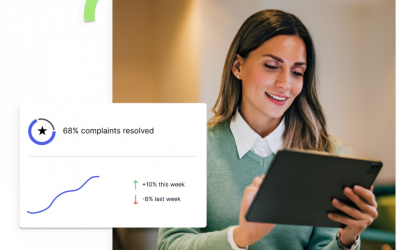Measuring employee mobility gives companies a map for preparing employees for leadership roles. There’s a balance between moving employees among positions and the length of time spent in each position that results in success; it is up to each company to discover their own “perfect” balance in order to be able to replicate it.
What Is Employee Mobility?
Mobility is the path that an employee takes within an organization. While some people think of mobility as a career path (as in “upward mobility”), it’s really much more. Mobility leads to different work experiences – a double-edged sword that can affect employee performance both positively and negatively.
Mobility includes:
- Moving up or down the corporate ladder
- Lateral moves
- Role or department changes
- Rotational assignments (such as Joint Duty Programs in the government)
- Status changes (part-time to full-time or vice versa)
Many companies move workers or allow them to move around: transfers, promotions, new roles or different locations. Some consulting companies even require employees with certain skills to find billable hours cross-company, which can result in continual mobility.
Why Is Mobility Such A Key Metric to Employers?
There is a basic cost to employee mobility: every role that’s vacated has to be refilled. If the role is reduced or remains unfilled, a company bears the cost of recruitment, training, and lost productivity.
Managing mobility and its cost to an organization is a Human Resources challenge. For example, ZeroedIn has an financial client that’s trying to find out why multiple people are leaving a particular department but staying within the company. HR wants to know where they are moving to and if other departments are actively soliciting people or if something else is happening. ZeroedIn is conducting a “collective listening” survey among affected employees to help determine the reason for the moves. Then an analysis of all the data will reveal the cause(s), compare department loss to possible gains in other departments where employees have moved and help determine if this mobility is good or bad for the company.
Increasingly, another cost and strategic issue for HR is finding employees with global mobility skills. With increased globalization and market competition, there are gaps in employee skills that are hard to fill. Companies want to understand if, and how, honing the needed skills internally will narrow those gaps and allow them to build a more robust, competitive workforce.
How Does Mobility Impact Individual Employees?
If employees move (or are moved) around too much, they might not stay in a position long enough to significantly contribute to the team. As a result, they may be rated as low performing. On the other hand, top performers may be the employees who got to stay longer in each role, make a larger contribution and therefore get rewarded, but their experiences outside that role may be lacking.
ZeroedIn Helps Find The Right Blend
With analytics, companies can determine the cause and effect between mobility and employee performance. They can find out if they get better performance by moving employees around or keeping them where they are, and how long employees should stay in each role to realize their best performances. There’s a balance between mobility and tenure that works for each individual company.
Unless you have the right analytical tools, company-generated mobility can be a hit-or-miss proposition. ZeroedIn provides not only the tools but also the insight to help a company find their perfect blend of employee tenure and mobility.




